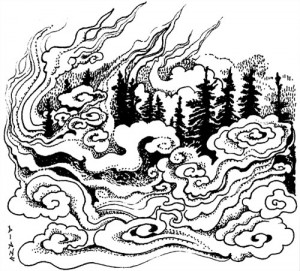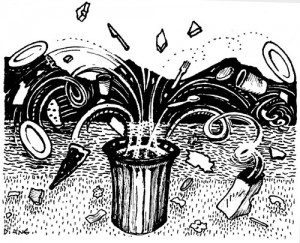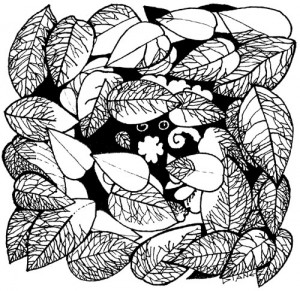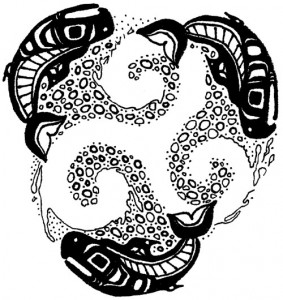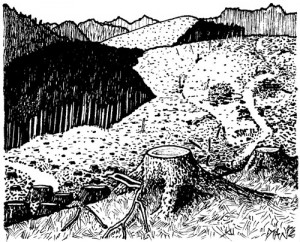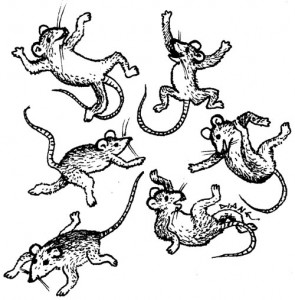The Qu’Appelle River runs through the Qu’Appelle Valley in southern Saskatchewan. So graceful and harmonious is this valley that it reminds the traveler of that visionary homeland where each thing has what it needs to live a beautiful life. When I first saw the Qu’Appellle Valley, I thought that this place was like the home I might have had if the Great War of 1914-1918 had not cast a violent shadow over the entire twentieth century.
The Qu’Appelle River flows through the Qu’Appelle Valley like a Queen on parade. Her name, “Qu’Appelle”, is French for “Who calls?” This is a rough translation of the original Cree words for the river, and there are many stories as to how the river got its name. One story goes like this:
Long ago a First Nations person was going down the river in his canoe. One day he heard a voice calling to him. He stopped paddling, and listened intently. Again he heard the voice calling, and he called out in his turn. No one answered him, so he carefully looked around for the tracks of another person. He couldn’t find any tracks, and from that time the river was known as “Who calls?” (1)
Today we cannot hear the earth speak in the same way as aboriginal people did before the coming of the Europeans. In the old days the relationship of First Nations people to nature was intense and personal. Everything in nature had the power to reveal itself as a living presence, should it choose to do so, and should a person be ready to hear or to see. This relationship went both ways. Human beings were part of nature as were fish, trees, rocks and grizzly bears. And because humans were created later than most other creatures, people were often humbly thought of as the younger sisters and brothers. So did humans see themselves as members of a larger family on a living earth. Black Elk said, “The first peace, which is the most important, is that which comes within the souls of human beings when they realize their relationship, their oneness, with the universe.”
In our technological, urban world we have lost much of our ability to hear many of the voices in nature. We long for connection to the beauty we see, and we talk of spirituality rather than formal religion. Spirituality is about the quality of our relationship to the world. It is about our ability to see our connection to everything around us, to see the beauty, to hear the voices, to be present to the miracle of that which is simply in front of us. Chief Seathl, after whom the City of Seattle was named, put it this way: “Every part of this land is sacred in the view of my people. Every hillside, every valley, every plain and grove….”
We reach out to the people around us with deep caring. We watch. We listen. Rain falls. The wind is like breathing. “All real living is meeting,” Martin Buber said. Life is relationship. First Nations people close many of their speeches and prayers with the expression, “All my relations.”
In April, 2010, an international conference for the protection of the earth took place in Bolivia. President Evo Morales of Bolivia invited the peoples of the world to this conference, and more than 30,000 people from over 100 countries came to share their concerns. President Morales urged the delegates to listen to the voices of indigenous people as they talked about respect for the earth and stewardship.
We can be more aware of the voices around us, and we can start with the people we meet every day. Can we hear the person who is asking for help? Eagles fly overhead at many of our ceremonies in the Downtown Eastside. What are the eagles saying to us? Waves on the shore of Crab Park have stories to tell. The Oppenheimer Park totem pole speaks to the long history of First Nations on this land, and it also asks us to remember those who have died in the Downtown Eastside, and those who have survived.
The old heritage buidings in our community speak to the early history of Vancouver, and in the streets late at night you can hear the voices of unemployed men during the Great Depression of the 1930’s. They are marching in a snake parade because they are hungry and have no place to sleep. Chinatown and Japantown have stories to tell of those who fought for dignity and human rights.
So many voices. So much pain and courage and laughter. “Who calls?” we ask, and we hear the voice of the other one, reminding us of relationship, or our kinship to the mice in the fields and the stars in the sky. As Chief Joseph said, “The earth and myself are of one mind.”
(1) River in a Dry Land, by Trevor Harriot, published by Stoddart, 2000, page 12.
